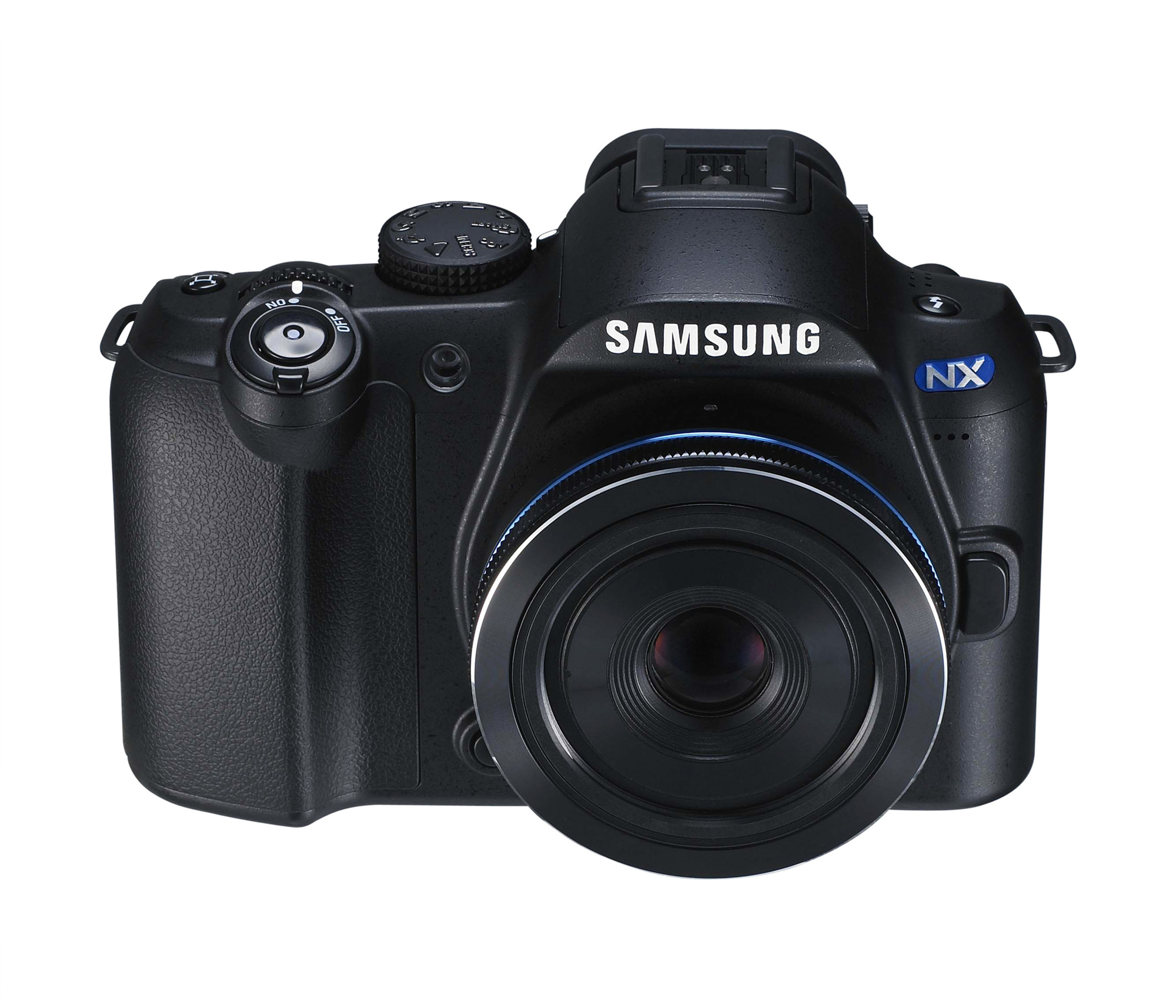Samsung announces Panasonic G1 competitor: NX Series dSLR-like compact point-and-shoot


The announcement included several photos of the prototype, but few technical details. Like the Micro Four-Thirds cameras, the Samsung NX will eschew the “single lens reflex” part of the dSLR equation (i.e., the mirror and prism that allows the viewfinder to see directly through the lens of an SLR) using an Electronic viewfinder (EVF) instead, but maintain a dSLR-sized sensor, enabling it to produce dSLR-rivaling image quality in a much smaller and lighter body. Unlike Micro Four-Thirds cameras, the Samsung NX will use a slightly larger APS-C sized sensor. Though it's unclear from the announcement whether the NX will support interchangeable lenses, the ability to do so in a compact body is one of the potential advantages of these so-called hybrid digital cameras (which Samsung predicts will command 20 percent of the global digital still camera market by 2012). Presumably, though, the Samsung would have proprietary lenses, unlike Micro Four-Thirds cameras which can use Panasonic and Olympus lenses (or any that support the standard, of course).
The first model of the NX Series will be available in the second half of 2009. DigitalCameraReview.com has a nice analysis here. (And check out reviews of the Panansonic Lumix DMC-G1 here.)